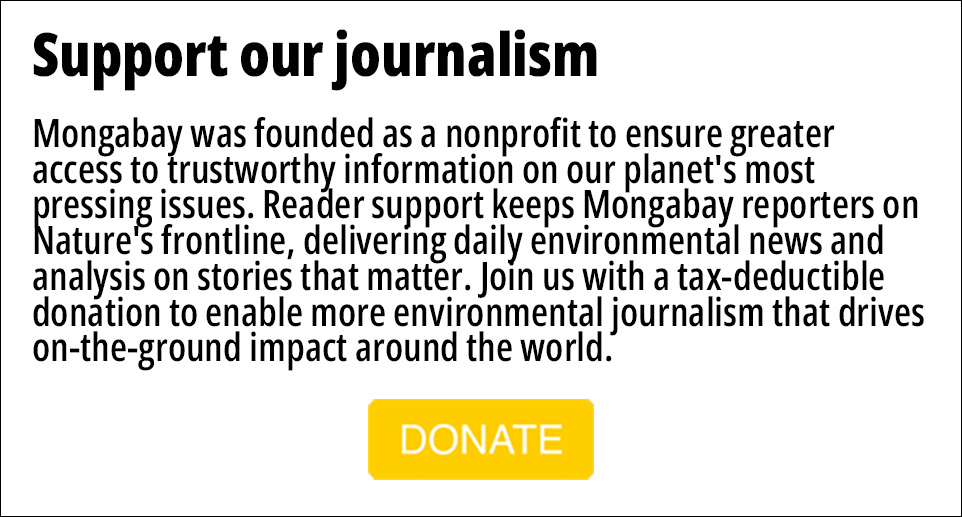
- An area nearly the size of Belgium will be cleared in Indonesia’s Papua province to grow food crops under a government program.
- A new analysis shows that this conversion alone could result in the release of 616 million metric tons of greenhouse gases — a third of what Indonesia as a whole currently emits in a year, or the same as Australia’s annual emissions.
- A government official says the program will try to minimize the area of forest required for the plantations and will prioritize the use of already degraded areas.
- But plans for how much forest will have be cleared remain vague, prompting a call for the government to reconsider the food crop program in light of its potential harms.
JAKARTA — A plan to clear forests in Indonesia’s easternmost region of Papua for food crops will release as much greenhouse gases into the atmosphere as Australia emits in an entire year, according to a new analysis.
This will spell disaster for Indonesia’s commitments to tackling climate change by reducing emissions from the forestry and land-use sector, say researchers from Pusaka, the nonprofit that carried out the analysis.
It found that the government’s food estate program, aimed at boosting domestic production of rice and other staple food crops, would lead to the clearing of vast swaths of rainforest, resulting in greenhouse gas emissions of 616 million metric tons of CO2 equivalent. That’s about a third of Indonesia’s total annual emissions, or the same as Australia’s.
According to the study, the government has mapped 2.7 million hectares (6.7 million acres) — an area almost the size of Belgium —of potential plantation areas for the crop program in the three Papuan districts of Merauke, Mappi and Boven Digoel.
“If we’re looking at the size of the impacted forests, then this is significant for Papua,” said Arief Wijaya, senior manager for climate and forests at the World Resources Institute (WRI) Indonesia, a think tank. “Considering that the size of forests in Papua is around 32 million hectares [79 million acres], then losing 2.7 million hectares is huge.”
He added the potential emissions from converting these forests into farmland would amount to nearly a quarter of Indonesia’s projected emissions by 2030 under the business-as-usual scenario.
Popi Puspitasari, one of the researchers involved in the Pusaka study, said keeping these forests standing could provide a windfall for the government in the form of carbon credits that can be sold on the international. The problem, however, is that Indonesia has undercut itself on carbon offsets, Popi said. The government has established a domestic carbon price of about $2 per metric ton of CO2 equivalent — much lower than the standard set by the Intergovernmental Panel on Climate Change (IPCC) of $40 to $80 per metric ton.
“If the carbon price were more promising for businesses, then [conserving the forests] could be an incentive,” Popi said.
Besides its impact on climate change, the food estate program will also threaten the lives of the Indigenous Papuans living in the affected areas who depend on the forests, she said.
“It will be difficult for them to look for food. By clearing their forests, it’s the same as killing their identity,” she said.

Large-scale forest grab
To ensure there’s enough land available for the food estate program, the Ministry of Environment and Forestry issued a regulation in 2020 allowing for protected forest areas to be cleared on a “large scale” for that very purpose.
Under existing laws, forest areas in Indonesia are off-limits for plantations unless the ministry issues what’s known as a forest release permit to rezone it as a non-forest area. But the new regulation does away with the need for developers to apply for a forest release permit. Nevertheless, if the program requires taking over forest areas, the ministry will limit it to forest areas that have already been degraded and no longer have ay tree cover, said Erik Teguh Primiantoro, the ministry’s director of environmental impact mitigation.
“So the status of an area could be forest area, but there’s no longer forest there,” he said during a recent online seminar. He cited the example of the Bangka Belitung Islands off southeast Sumatra, where tin mining has rendered areas designated as forest largely bare.
By converting similar areas of degraded forest in Papua into agricultural plantations, there’s the added benefit that they can gradually be transformed back into forests through agroforestry, Erik said.
But Popi said this goes against the spirit of the 1999 forestry law, which clearly stipulates that protected forest areas are off-limits to clearing.
“Even if they’re degraded, they have to be restored” and not planted with agricultural crops, she said.
Agiel Prakoso from Pantau Gambut, a coalition of 23 NGOs that acts as a watchdog for peatland protection and restoration efforts, also questioned the government’s rationale.
“Why don’t we rehabilitate or recover protected forests that are degraded first?” he said. “And if we want to implement agroforestry, why don’t we do it after there are trees standing instead of the other way around?”
Besides concerns over potential clearing of protected forests, there are also concerns that the food estate program, which will also be carried out in Sumatra and Borneo, among other locations, will threaten the survival of already imperiled wildlife.
The forestry ministry’s Erik confirmed that some of the potential areas for the plantations overlap with the habitats of critically endangered species in Borneo and Sumatra, including orangutans and tigers. To minimize the program’s impact on these species, he said, the government would avoid as much as it could operating within their habitat. Failing that, he said, the government will build wildlife corridors to connect fragmented habitats.
For now, however, there’s no master plan for how to implement the food estate program, Erik said. In North Sumatra, for instance, it’s “still not clear” how much and which forest areas will be taken over for the program, he said, while in Borneo’s Central Kalimantan province “it’s not conclusive yet.”
Franky Samperante, director of Pusaka, said that with so many concerns still left unaddressed, the government should reconsider whether to proceed with the food estate program.
“Especially if we imagine the cost of mitigating the impact and risk caused by this project,” he said. “For instance, the cost of resolving conflicts and restoring [the environment]. That’s high.”
Banner image: The stocky, flightless northern cassowary (Casuarius unappendiculatus) is one of the birds-of-paradise for which Papua is famous. Photo by Rhett Butler/Mongabay.
FEEDBACK: Use this form to send a message to the author of this post. If you want to post a public comment, you can do that at the bottom of the page.
Forest clearing for crop program in Papua may unleash massive emissions
Source: Trends News


0 Comments